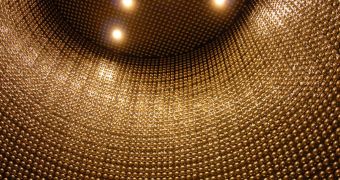The Antares telescope is designed to detect quantum particles, called neutrinos. However, during tests, the primary detector of the telescope seemed to be able to distinguish between marine species, and is now adapted for marine life and sea health observation.
When completed, the installation will be composed of 12 electrical cables raising 350 meters above the sea floor, out of which 8 are currently in place. The neutrino is an elementary particle, from the group of particles called leptons such electrons and muons, part of the family of fermions, meaning it is a component of all knows matter, and can be obtained from the decay of 'elementary' particles such as protons and neutrons, also knows as beta decay.
It has a partner particle, called antineutrino, and three knows flavors: electron neutrinos, muon neutrinos and tau neutrinos. It has no electrical charge, spin number equal to ?, and a very small mass that cannot be currently calculated, and can travel at speeds close to the speed of light.
It was predicted in the 1930 by Wolfgang Pauli while trying to explain beta decay conservation of energy, the decay of a neutron into a proton and an electron. He observed differences between the energy of the initial and final particles, and postulated that there must be an unobserved particle responsible for this difference.
It was discovered in 1953 near a nuclear reactor. Neutrons, can be created in nuclear reactors, and in the Sun as a result of the nuclear fusion. It has been calculated that more than one hundred million neutrinos, pass through a human finger each second, and fifty billion through a human's entire body.
Though neutrinos are all over the place, they are incredibly hard to detect. They only interact with matter by weak nuclear interactions. A neutrino could theoretically pass through the whole mass of the Earth without being deviated from its moving direction.
Multiple neutrino detectors have been built in the last years, working with regular water, heavy water and mineral oil, in the hope that the illusive mass of the particle can be detected. It is generally thought that discovering the mass of the neutrino could solve the problem regarding the ultimate fate of the universe and its beginning.

 14 DAY TRIAL //
14 DAY TRIAL //